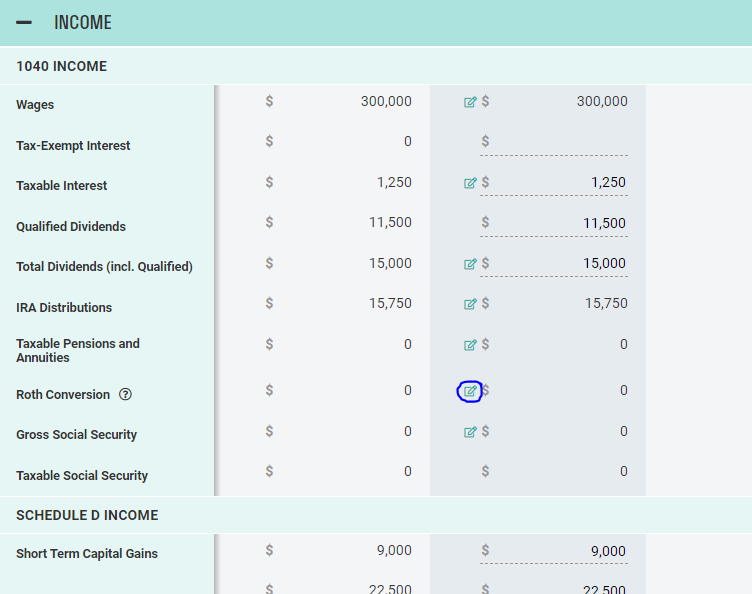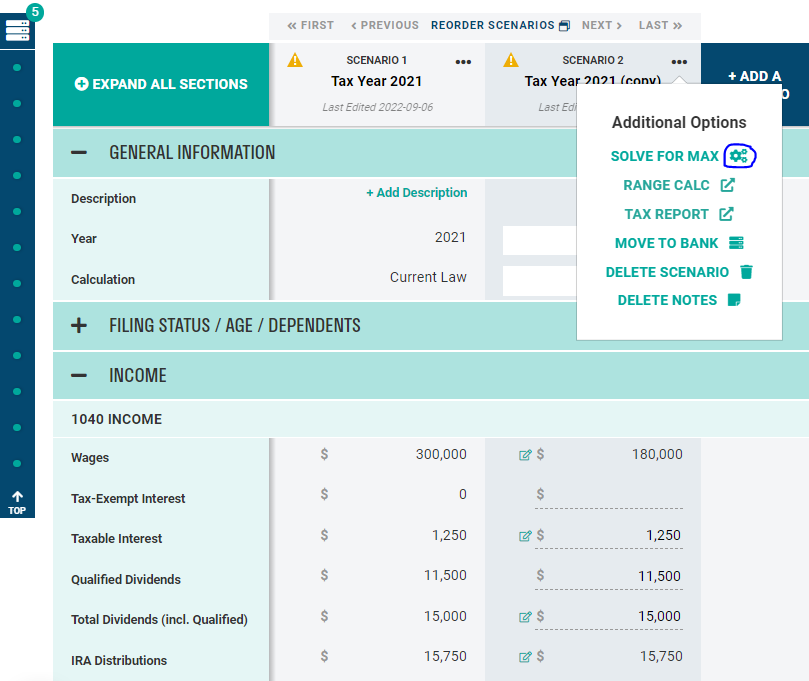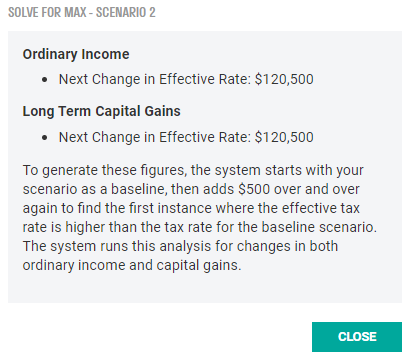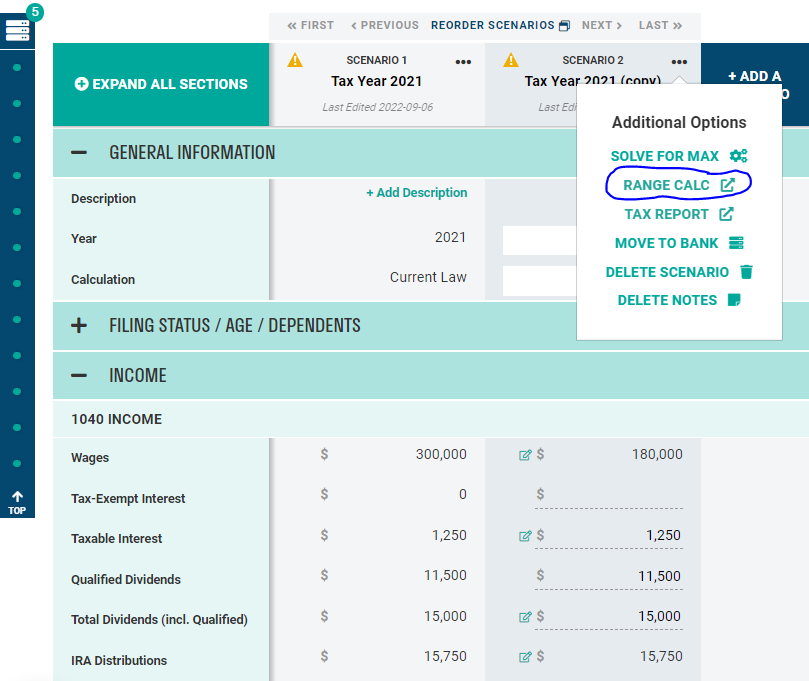Roth Conversions
How to model a Roth Conversion
In Scenario Analysis, you are capable of creating a baseline and changing subsequent scenarios to model how a Roth conversion would affect a client.
The Roth Conversion box can be found in the "1040 Income" section. To access the Roth Conversion worksheet, click on the pencil icon in that row.
The worksheet allows a user to enter the total amount of Roth conversion across all taxpayers in a household or to segregate conversion amounts by taxpayer (note that this is necessary for some state tax projections). If the "Roth Conversion (Override - All taxpayers combined)" has any data in it - including a 0 - the Taxpayer 1 and Taxpayer 2 fields will not be editable.
The worksheet will illustrate the total amount of any conversion, along with the incremental tax cost of that conversion. (Note: if there is basis in the Traditional IRA, you may need to estimate the amount of the conversion that is truly taxable, as the Scenario Analysis tool cannot perform that calculation.) 
To determine how much of a conversion to make, use the "Solve for Max" and "Range Calc" features. As described in other articles, "Solve for Max" will indicate how much more ordinary income or capital gains income can be realized in a given scenario before there's a change in the effective tax rate. (Note that this is not necessarily the same thing as a change in the marginal tax bracket!) In the example below, the taxpayer could add $120,500 of either type of income before seeing an increase in the effective tax rate with the next $500 of income. 

You can read more about the "Solve for Max" feature here.
Range Calc takes that one step further and illustrates what happens beyond that next change in the effective rate, as well as provides attribution for the various taxes and phase-ins/outs that make up the total tax rate. 
This is an example of what a Range Calc graph will look like. It uses another sample client scenario, and not the above scenario, in order to show more data and breakpoints for a taxpayers with lower income.
You can read more about Range Calc here.